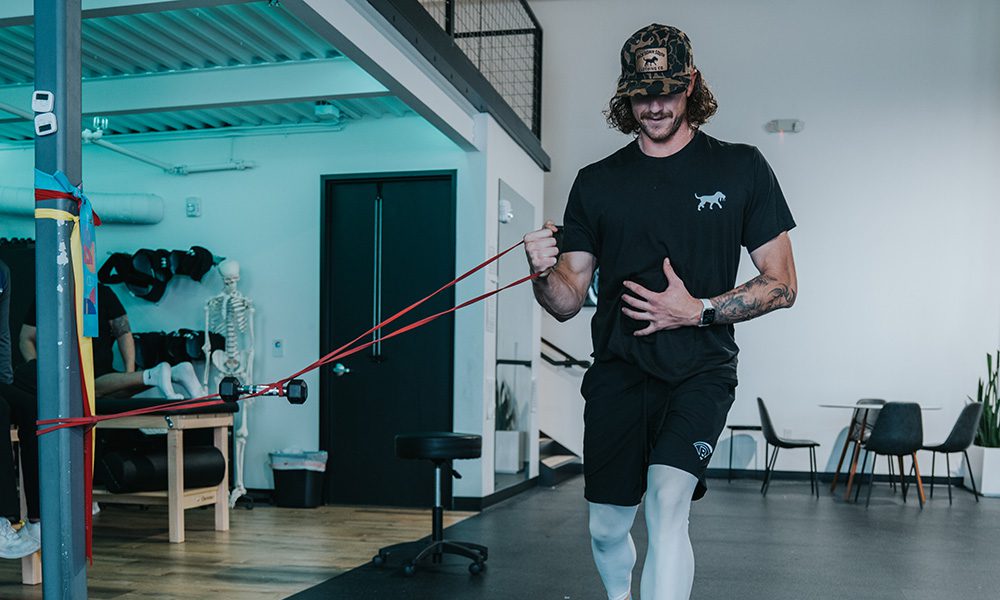It happens to the best athletes, and it can happen to any of us who are trying to stay fit through athletics: injury. Whether it’s an ACL tear, a labral tear, a meniscus tear, or another type of injury, surgery is often necessary to reconstruct or repair. After surgery, a patient’s rehabilitation is essential for promoting functionality and strength. There are many healthy ways to help get through the healing process. Here are 9 physical therapy tips to boost your recovery:
- Know what to expect. Soft tissue injury is quite common, and the healing of soft tissue happens in 3 stages: inflammation, regeneration, and remodeling. During this time period, new tissue growth replaces the damaged tissue. In order for healing and repair to happen, a tailored, effective approach is required. An experienced PT professional can help with this whole process.
- Have some R.I.C.E. The first stage of healing—inflammation—can take from 24 to 72 hours. During this time, a helpful way to encourage healing is to apply the R.I.C.E. method. R.I.C.E. stands for rest, ice, compression, and elevation. Resting for a few days post injury is key. Icing for 15-20 minutes every few hours helps ease pain, and wrapping or compressing with a bandage helps with swelling. Altogether, this process can help minimize swelling, alleviate pain, and promote healing.
- Focus on an integrated approach. Healing can be affected by a number of things—from diet to general health, to the kind of injury and its location on the body. More than traditional rehab, an integrated approach that involves several different types of specialists with a holistic plan specifically tailored to the patient helps to ensure a full recovery for the whole athlete.
- Remodel patiently. After regeneration happens, the length of the remodeling stage of healing varies; it can take anywhere from 6 weeks to years. Once a patient is cleared to move post-op, it’s a personal choice to determine when to work on regaining function, strength, and mobility. Getting advice from experts in PT throughout this stage can be extremely helpful.
- Be Mindful. Healing does not just involve the physical body. Mental and emotional recovery from the stress and strain of injury and surgery are essential. Getting athletes to a parasympathetic state means helping to slow heart and breathing rates, to enter a state of relaxation, and to encourage recovery. At a place like ROI, amenities such as a zero-gravity chair, red light therapy, heart rate variability tracking, and meditative sound can all help with a patient’s parasympathetic response.
- Consider circulation. Improving blood flow can help with healing. Heat from a sauna can enhance the circulation of blood and oxygen throughout the body. This heat helps in the recovery process. Conversely, cold therapy can also be beneficial. By reducing swelling, cold therapy can also reduce inflammation and pain sensitivity.
- Fuel well. Nutrition can help promote recovery. Eating a diet rich in fruits, vegetables, clean proteins, and healthy carbs should give your body the nutrients it needs. Cutting out added sugar and processed foods can help to decrease inflammation in the body. In addition, incorporating good hydration, collagen, and superfoods can all help the body in the process of repairing and healing. Adding carefully selected nutritional supplements for before, during, and after training can also be especially effective.
- Track your progress. Performing the right exercises at the right time and in the right amounts is at the heart of successful rehabilitation. Each patient has their unique goals and needs; doing a routine, recording progress, and adjusting it accordingly will help achieve goals safely and effectively.
- Heal with professional help. A trained team of physical therapists can help patients rebuild strength and increase activity tolerance. From exercise to postural instruction, there are many recovery options that physical therapists can employ on a journey to recovery. Working with a physical therapist for post-operative recovery can help ensure proper healing, restore pre-injury range of motion, and minimize muscle loss. Seek help from experienced professionals to heal in a safe and timely manner.
ROI Physical Therapy and Sports Performance has designed its programs with innovative techniques and scientific principles, especially equipped to help with healing and recovery. Learn more about what ROI offers, or reach out to contact ROI.

